Capacitor is the most commonly used device in circuit design and is one of the passive components. Simply put, an active device is a device that requires an energy (electricity) source. It is called an active device. A device that does not require an energy (electricity) source is a passive device. Capacitors also often play an important role in high-speed circuits.
There are generally many functions and uses of capacitors. Such as: its role in bypass, decoupling, filtering, and energy storage; its role in completing oscillation, synchronization, and time constants.
Let’s analyze it in detail:
DC blocking: The function is to prevent DC from passing through and allow AC to pass through.

Bypass (decoupling): Provides a low-impedance path for certain parallel components in an AC circuit
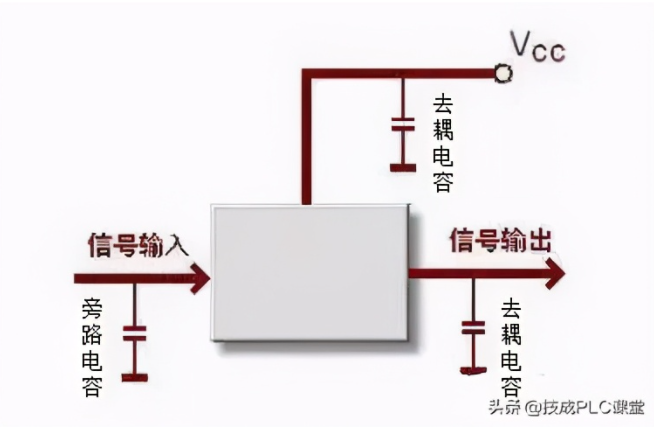
Bypass capacitor: Bypass capacitor, also known as decoupling capacitor, is an energy storage device that provides energy for a certain device. It makes use of the frequency impedance characteristics of the capacitor (the frequency characteristics of an ideal capacitor decrease as the frequency increases) , like a pond, it can make the output voltage output uniform and reduce the load voltage fluctuation. The bypass capacitor should be as close as possible to the power supply pins and ground pins of the load device. This is an impedance requirement. Pay special attention when drawing the PCB. Only when it is close to a certain component can it suppress the voltage or other input signals caused by being too large. The ground potential rise and noise, to put it bluntly, is to couple the AC component in the DC power supply to the power supply ground through the capacitor, which plays the role of purifying the DC power supply. As shown in the figure, C1 is the bypass capacitor. When drawing, it should be as close as possible to IC1.

Decoupling capacitor: Decoupling capacitor is used to filter the interference of the output signal. The decoupling capacitor is equivalent to a battery. It uses its charge and discharge to prevent the amplified signal from being interfered by sudden changes in current. Its capacity is determined by the frequency of the signal and the degree of ripple suppression. The decoupling capacitor acts as a “battery” to meet the changes in the drive circuit current and avoid mutual coupling interference.
The bypass capacitor is actually decoupled, but the bypass capacitor generally refers to a high-frequency bypass, which is to provide a low-impedance leakage path for high-frequency switching noise. High-frequency bypass capacitors are generally relatively small, usually 0.1F , 0.01F, etc. according to the resonant frequency; while the capacity of the decoupling capacitor is generally larger, possibly 10F or larger, depending on the distribution parameters in the circuit and the changes in the driving current. to make sure. As shown in Figure C3 is the decoupling capacitor.

The difference between them: Bypass uses the interference in the input signal as a filter object, while decoupling uses the interference in the output signal as a filter object to prevent the interference signal from returning to the power supply.
Coupling: serves as a connection between two circuits that allows AC signals to pass through and be transmitted to the next circuit

The purpose of using capacitors as coupling components is to transmit the signal from the previous stage to the next stage, and to block the influence of the DC from the previous stage on the latter stage, making circuit debugging simple and performance stable.
If no capacitor is added, the AC signal amplification will not change, but the working points of each level need to be redesigned. Due to the influence of the front and rear stages, it is very difficult to debug the working points, and it is almost impossible to achieve at multiple levels.
Filtering: This is very important for the circuit. The capacitors behind the CPU basically have this function.
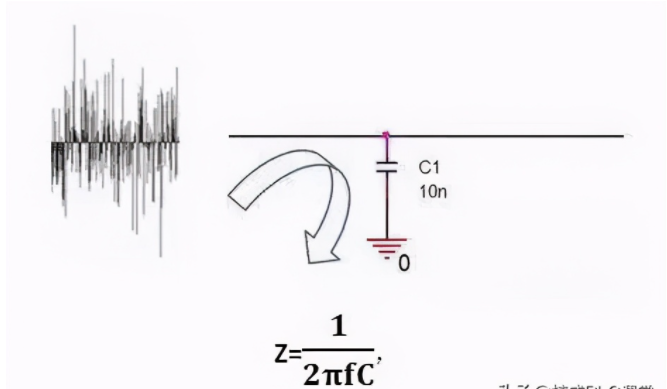
That is, the greater the frequency f, the smaller the impedance Z of the capacitor. When the frequency is low, the impedance Z of the capacitor C is relatively large, and useful signals can pass through smoothly; when the frequency is high, the impedance Z of the capacitor C is already very small, which is equivalent to short-circuiting the high-frequency noise to GND.

Filtering effect: Ideal capacitor, the larger the capacitance, the smaller the impedance, and the higher the passing frequency. Electrolytic capacitors generally exceed 1uF, and the inductance component is very large, so the impedance will increase when the frequency is high. We often see an electrolytic capacitor with a large capacitance connected in parallel with a small capacitor. In fact, the large capacitor passes low frequencies and the small capacitor passes high frequencies, so that high and low frequencies can be fully filtered out. The higher the frequency of the capacitor, the greater the attenuation. The capacitor is like a pond. A few drops of water are not enough to cause a big change. That is to say, the voltage can be buffered when the voltage fluctuation is not large, as shown in Figure C2.

Temperature compensation: Compensate for the impact of other components’ insufficient adaptability to temperature to improve the stability of the circuit.
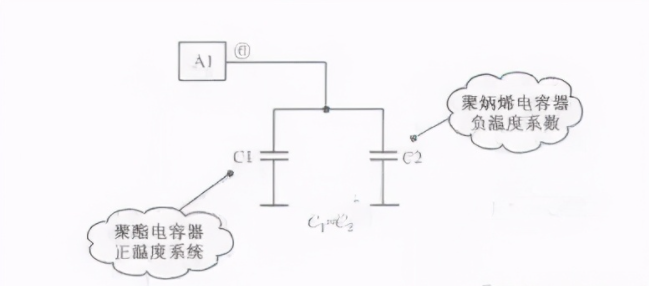
Analysis: Since the capacity of the timing capacitor determines the oscillation frequency of the horizontal oscillator, the capacity of the timing capacitor is required to be very stable and not change with changes in environmental humidity, so that the oscillation frequency of the horizontal oscillator can be stabilized. Therefore, capacitor release connections with positive and negative temperature coefficients are used to perform temperature complementation.
When the operating temperature increases, the capacity of Cl increases while the capacity of C2 decreases. The total capacity of two capacitors connected in parallel is the sum of the capacities of the two capacitors. Since one capacity is increasing while the other is decreasing, so the total capacity remains basically unchanged.
In the same way, when the temperature decreases, the capacity of one capacitor decreases while the other increases. The total capacity remains basically unchanged, which stabilizes the oscillation frequency and achieves temperature compensation.
Timing: Capacitors are used in conjunction with resistors to determine the time constant of a circuit.
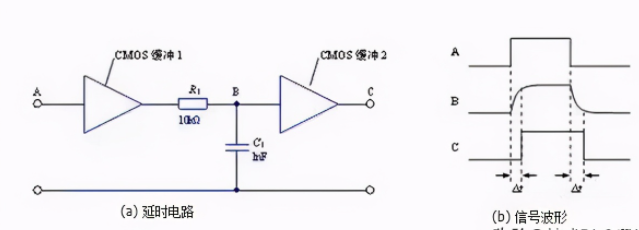
When the input signal jumps from low to high, it is input to the RC circuit after buffering 1. The characteristics of capacitor charging mean that the signal at point B does not jump immediately following the input signal, but has a process of gradually becoming larger . When it becomes large enough, buffer 2 flips over and gets a delayed low-to-high transition at the output.
Time constant: Taking the common RC series connection forming an integrating circuit as an example, when the input signal voltage is applied to the input terminal, the voltage on the capacitor gradually rises. The charging current decreases as the voltage rises. The resistor R and the capacitor C are connected in series to the input signal VI, and the capacitor C outputs the signal V0. When the value of RC (τ) and the input square wave width tW satisfy: τ 》》tW, this kind of circuit is called an integrating circuit.
Tuning: System tuning of frequency-dependent circuits, such as mobile phones, radios, and televisions

Because the resonant frequency of an LC-tuned oscillator circuit is a function of LC, we find that the ratio of the maximum to minimum resonant frequencies of the oscillator circuit varies with the square root of the capacitance ratio. The capacitance ratio here refers to the ratio of the capacitance when the reverse bias voltage is minimum to the capacitance when reverse bias voltage is maximum. Therefore, the circuit’s tuning characteristic curve (bias voltage-resonant frequency) is basically a parabola.
Rectification: turning on or off a semi-closed conductor switching element at a predetermined time
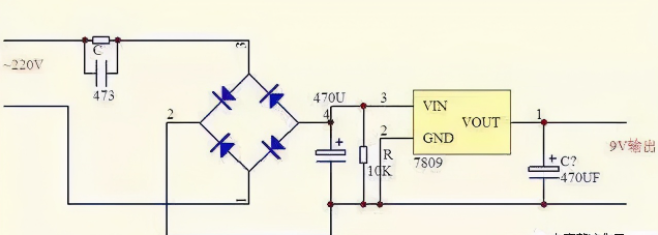
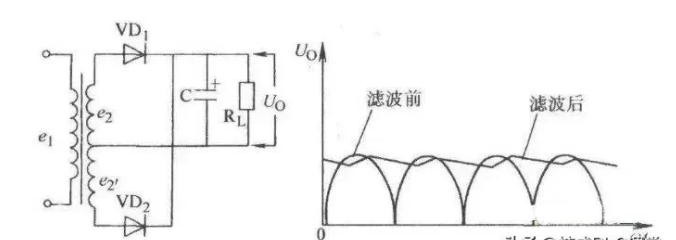
Energy storage: stores electrical energy and releases it when necessary
For example, camera flash, heating equipment, etc. (Today, the energy storage level of some capacitors is close to that of lithium batteries. The energy stored in one capacitor can be used by a mobile phone for one day.

Energy storage function: Generally, electrolytic capacitors have the function of energy storage. For capacitors with special energy storage function, the mechanism of capacitor energy storage is double-layer capacitor and Faraday capacitor. Its main form is supercapacitor energy storage. Supercapacitor is a capacitor that utilizes the double-layer principle. When the external voltage is added to the supercapacitor, When the two plates of a capacitor are on, like an ordinary capacitor, the positive electrode of the plate stores positive charges, and the negative plate stores negative charges . Under the action of the electric field generated by the charges on the two plates of the supercapacitor, the electrolyte and the electrode are Opposite charges are formed on the interface to balance the internal electric field of the electrolyte. This positive charge and negative charge are arranged in opposite positions with a very short gap between the positive and negative charges on the contact surface between two different phases. This charge distribution layer is called an electric double layer, so the capacitance is very large.
The author of this article – Toutiao (Jicheng PLC Classroom), related keywords: Network IO controller